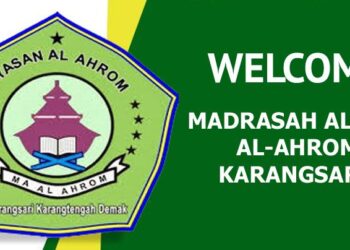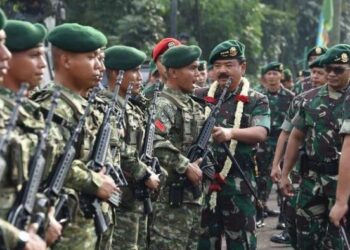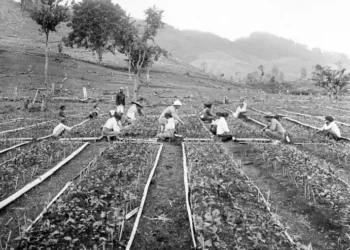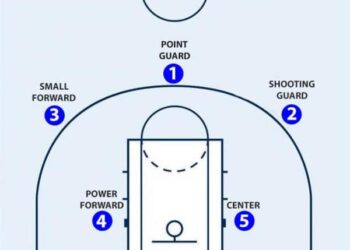Historical Thinking On Historical Education
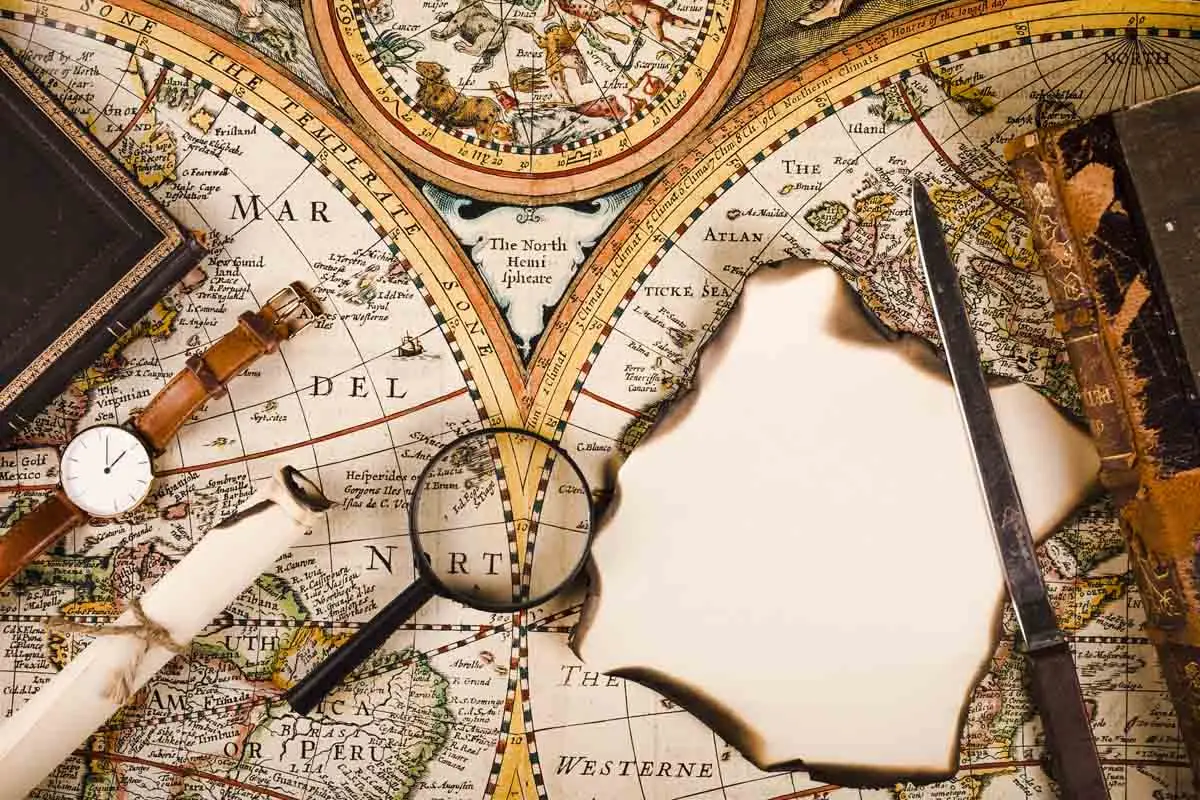
With historical science, we are able to see not only the present, but also be able to see the future with a directional view according to the specific line that wants to be determined. “Historical-mindedness” also raises awareness that the future is part of our time, and also part of the world, then there are similar historical processes going on. History reinforces the feeling of reality, so as not to raise expectations such as the coming of the millennium or the golden age. In this relationship it is worth quoting Barzun’s remark that “The History of Galvanizing the human soul becomes strong and resilient in the face of terror and chaos in our lives“.
Historical research has five stages that must be adhered to by each researcher who will examine and write a historical event. These stages include several points, including: Topic selection, Resource collection, Historical Verification (in the form of internal and external criticism of history, in search of source validity), Intrepretasi (analysis and synthesis), and Source Conclusion Writing.
According to the National Center For History In The School (UCLA) The study of history lies in the knowledge of facts, dates, names, places, events, and ideas. In addition, true historical understanding requires students to engage in historical thinking. Historical thinking is needed to ask questions and to gather strong evidence to support their answers, go beyond the facts presented in their textbooks and examine historical records for themselves, consult documents, journals, diaries, artifacts, historic sites, artworks, quantitative data, and other evidence from the past, and do so imaginatively taking into account historical context. The note was created and compares many of the points of view of people on the scene at the time.
Historical Thinking requires students to have the opportunity to create their own historical narratives and arguments. These narratives and arguments can be derived from various things, including: essays, debates, and editorials. It can be started in a variety of ways. To begin to think history can be learned from issues, past and present. Students aim to enter into the historical record and provide an analysis of the issues raised to bear responsibility in the analysis of the problem.
Historical Thinking also requires students to seriously read historical narratives created by others. Good historical narrative writing is interpretive, revealing and explaining relationships, changes, and consequences. Historical narratives are also analytical, combining life stories and biographies with conceptual analysis drawn from all relevant disciplines. Such narratives promote important skills in Historical thought.
Reading the narrative requires students to analyze the stated and unwritten assumptions from which the narrative was constructed and assess the strength of the existing source. This requires students to consider the importance of what the author enters as well as choose to eliminate unnecessarily written, for example, the opinions and experiences of researchers (subjectivity) that are also an important part of the history of their time. Students are required to examine the interpretive nature of history and compare, for example: alternative historical narratives written by historians who have been given different weights for political, economic, social, and technological causes of events that have developed competing interpretations of the importance of events.
Read also:
Javanese Exoticism, Diversity of Life and Culture of Javanese People
The Role of Women on Batik Industry
Islamic Education Pondok Pesantren Gontor
The National Center For History In The School (UCLA) “Historical thinking” is divided into 5 skills are:
A. Chronological Thinking
Chronological thinking is at the heart of historical thinking. Chronological learning is one of the important objectives in historical learning, as the sequence of events is a key point in understanding the past and present. Chronology gives two ideas about the change and continuity of each event experienced by humans. To develop an understanding of the past and see its connection to their own lives, students must advance and rewind the concept of time they have according to the existing timeline. This is the only way that students can build perspective concepts or formulate significant time concepts for themselves. Chronology provides mental considerations for organizing historical thought.
Chronological thinking skills are guidelines for how an expert searches for a sequence of interconnected events. This skill became the first capital for history students to understand history systematically.
B. Historical Comprehension
History has the power to express the intentions of the people involved, the difficulties they encounter, and the complex world in which these historical figures actually live. To read historical stories, biographies, autobiographies, and narratives with understanding, students must develop the ability to read imaginatively, to consider what narratives express from the humanity of the individuals and groups involved–their motives and intentions, values and ideas, hopes, doubts, fears, strengths, and weaknesses. Understanding historical stories requires also that students develop a historical perspective, the ability to describe the past on their own terms, through their eyes and experiences that are there. By studying literature, diaries, letters, debates, art, and artifacts of past societies, students should learn to bring up “new thinking” without judging the past only in terms of today’s norms and values, but taking into account the historical context in which events occur.
Students must develop the skills needed to understand the historical story that explains and tells the course of events and analyzes the relationship between the various forces present at the time and influences the way it will occur. These skills include:
- Identify the central questions of historical history and seek to answer,
- Determining the purpose, perspective, or point of view from which this story has been constructed,
- Read historical explanations or analysis with meaning;
- recognize rhetorical cues of how the author gives clues as to where the story is headed.
Understanding historical narratives will be achieved if students can take advantage of the data presented in historical maps; visual, mathematical, and quantitative data are presented in various organizer charts, and various visual sources such as historical photographs, political cartoons, paintings, and architecture to explain, describe, or decipher the information presented in the text.
C. Historical Analysis and Interpretation
Interpretation or interpretation is often referred to as a source of subjectivity. The honesty of a historian, can be seen from whether he lists the source of the data and the information from which it was obtained. Because by listing the source, others will later be able to see and reread and reinterpret the source according to the conclusion of their thinking. That is why, the subjectivity of historical writing remains acknowledged, but to avoid. understanding is divided into two kinds, namely analysis and synthesis. Analysis means deciphering. Sometimes a source contains several possibilities so there needs to be parsing from multiple sources. Synthesis means unifying. From the analysis process will get the data that is still split and there is no synchronization. This is where the synthesis process begins.
One of the most common problems in helping students to become thoughtful readers of historical narratives is that students are required to find the right answer between an important fact or the author’s subjective interpretation. Some of these problems stem from how historians still use conventional methods in textbooks that still present history using a succession of facts that are too rigid and lacking in a story approach that is indeed devoted to students. To solve this problem, it takes more than one source that includes history books in addition to textbooks and from a variety of historical documents and artifacts that bring new knowledge and interpretations or perspectives about the past.
Students need to be aware that historians can differ on the point of view for the development of their narrative and how a fact is interpreted. History usually means what happened in the past, but the history written is a dialogue among historians, not only about what happened but about why and how events were reviewed. The study of history doesn’t just remember the answer. This requires analyzing and evaluating existing arguments even if tentative conclusions based on available evidence.
To perform historical analysis and interpretation, students must utilize historical understanding skills. For example, identifying the author or source of a historical document or narrative and assessing its credibility (understanding) is a prerequisite for comparing historical narrative differences (analysis). Analysis is built on comprehension skills, requiring students to assess a historian’s point of view of a fact and determine the level of truth of the interpretation made of that fact. It goes without saying that in this stage of the analytical ability students should develop the ability to distinguish between expression of opinion, no matter how passionately conveyed, and the information hypothesis based on historical facts.
D. Historical Research Capabilities
In this process the student’s contextual knowledge of the historical period in which documents or artifacts were created becomes very important. Few records of the event will be available to students. Collecting data, evaluating the records they get, and imaginatively building historical or narrative arguments requires a broader context of meaning.
To achieve this goal, historical studies provide important support to ongoing student narratives to reveal greater context. Ongoing narrative studies are not only limited to textbooks, but students can also develop problems into more meaningful contexts. Hence the importance of providing other students’ documents or notes outside of the materials included in the textbook, which will allow students to challenge textbook interpretations, to ask new questions about the event, to investigate their perspectives that are not written in textbooks.
With these conditions, students will see their questions as creative contributions. They will better understand that the history written is human construction, that the laws of the past are tentative and debatable. Historians regard their work as a critical investigation and debate with other historians. On the other hand, careful research can solve problems from the past and can correct previous arguments.
With their active involvement in historical research, students will learn for themselves why historians continue to reinterpret the past, and why new interpretations arise not only from uncovering new evidence but from rethinking old evidence in explaining emerging new ideas in our own time.
Read also:
Javanese Exoticism, Diversity of Life and Culture of Javanese People
The Role of Women on Batik Industry
Islamic Education Pondok Pesantren Gontor
E. Historical Issues-Analysis and Decision-Making
Almost everything that is taught is something that can be debated or has a debate in the source and conclusion of a data. This is increasingly apparent when carrying out historical teaching activities. The more we understand the present with the help of the past, the more likely it is to get controversial issues. There is often a debate about the truths found from the past and interpretations of the characters, events, and times. Subjective elements in historical science are part of the process of acceptance, selectiveness, and interpretation of historical facts compared to other branches of social science. This fact is important because it is the main point of view of historians looking at past events can also determine, to some degree, his attitude to society’s actual problems.
Issue analysis and decision-making are the right student activities amid historical dilemmas and problems faced at critical times past and present. If well-chosen, this activity also promotes vital capacity for democratic citizens in several ways, including:
- Ability to identify and define public policy issues and ethical dilemmas
- Analyze the various interests and values held by many people who are stuck in the situation and influential with the results.
- Find and organize the data needed to assess the consequences of alternative approaches to solve the dilemma.
- Ethical implications as well as comparative costs and benefits of their respective approaches.
- Evaluate specific actions in the explanation of all of the above and in analyzing historical case issues and long-term explanations so as to be able to be revealed in historical records.
In this analysis, teachers have a special responsibility to help students distinguish between (1) relevant historical anteseden and (2) inappropriate and irrelevant things. Students need to learn how to use their knowledge of history (or the past) to bring historical analysis to decision-making services.
The description of the skills students must have to achieve a historical understanding shows how important it is to sort and analyze the data found. A critical attitude to data is necessary so that students as prospective educators do not get caught up in the subjectivity of existing sources. This step is crucial to creating students who are able to speak history based on facts without being influenced by the “doctrine” that develops for a particular benefit.
BIBLIOGRAPHY
Arikunto, Suharsimi. 2002. Prosedur Penelitian Suatu Pendekatan Praktik. Jakarta : Rineka Cipta.
Dimyati dan Mudjiono. 2009. Belajar dan pembelajaran. Jakarta: Rineka Cipta.
Djamarah, Syaiful Bahri dan Aswan Zain. 2010. Strategi Belajar Mengajar. Jakarta: Rineka Cipta.
Hardati, Puji,dkk.2010.Pengantar Ilmu Sosial. Semarang: Widya Karya.
Kochhar. 2008. Pembelajaran Sejarah. Jakarta : Grasindo.
Kuntowijoyo. 1995. Pengantar Ilmu Sejarah. Yogyakarta: Yayasan Bentang Budaya.
Wineburg, Sam. 2006. Diterjemahkan oleh Masri Maris, Historical Thinking and Other Unnatural Act Charting the Future of Teaching the Past. Jakarta: Yayasan Obor Indonesia.






